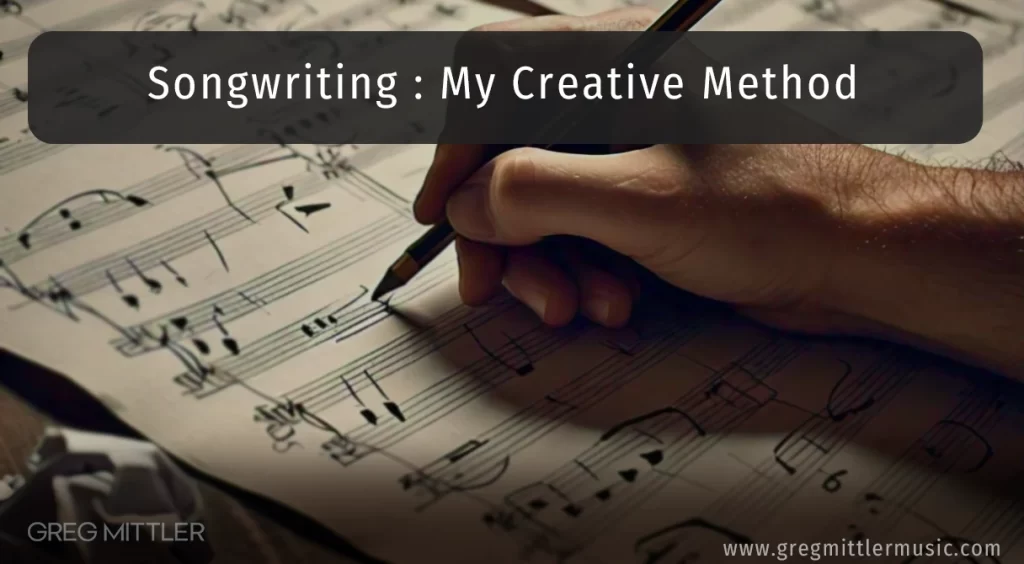
From Inspiration to Lyrics: Greg Mittler’s Songwriting Process
Detailing my personal songwriting process, from finding inspiration to writing lyrics. This post includes anecdotes and language tools for other songwriters to compare their creative songwriting methods with.
Finding Inspiration
Every songwriter has a unique process. While I focus mainly on tunes driven and written by emotion, it’s important to acknowledge that songs created in other ways are just as legitimate. Inspiration can come from countless sources beyond personal experiences that evoke happiness or sadness.
For instance, inspiration might strike while reading a book, watching the news, remembering a dream, or sharing an intense group experience. These sources can drive the creation of a happy, sad, angry, protesting, or humorous song. Emotion is often the driving force that compels a songwriter to finish a piece, transforming strong feelings into music that can resonate deeply with listeners.
The Songwriting Process
Some songwriters begin with lyrics and then create the music to match. Others hear the melody first and then write lyrics to fit. Some may even find that words and music emerge simultaneously.
My Creative Process
I write tunes in one of two ways, both beginning with an instrument like a piano or guitar.
1. Melody from Chords:
- When I play random chords, a melody usually attaches itself. I sing the melody until I know it well, and it often plays repeatedly in my head even when I’m not focused on music. Over a few days, bits and pieces of phrases start to attach to the ongoing melody. I write these down, sometimes finding only a phrase that eventually reveals its theme, making the lyrics easier to write. For example, “Gypsy Saviour” began with only two words. Over weeks, I realized it referred to Mother Nature and the impact of Pollution. This song became my first cover, recorded by Bonfield-Dixon.
2. Emotional Connection:
- Sometimes, a melody comes with an emotional connection, and I know the song’s theme before any lyrics are written. My task then is to match the right lyrics to the musical emotion. For instance, “Uglyman” had a clear musical theme that felt sad but also conveyed growth and individuality. When I found the right words, the song practically wrote itself. Writing the first two verses was straightforward, but the bridge and final verse took longer to translate as they contained a sense of growth and change.
Tips for Structuring Lyrics
1. From General to Specific (or Reverse):
- In “Relentless,” verse 1 includes personal elements, verse 2 moves to a broader perspective, and verse 3 generalizes further.
2. Encapsulating Meaning in the Bridge or Chorus:
- In “Android Wars,” the chorus summarizes the hopelessness and chaos of the war the character is fighting in.
3. Using Analogies:
- “Tiny Island” is a boy-meets-girl story. Using the analogy of a tiny island conveys loneliness and adds humor, as the island is too small for more than one person.
Polishing the Creation
Once the words and music are mostly set, I optimize what I have. This involves modifying lyrics for clarity or finding alternative phrases if the original ones are difficult to sing. This final step helps polish the creation and ensures it’s as effective as possible.
By sharing insights and language tools, I hope other songwriters can compare and contrast their own techniques in songwriting. Whether driven by emotion or another source of inspiration, every song has the potential to build a bridge to another world for the listener, even if just for a short time.

